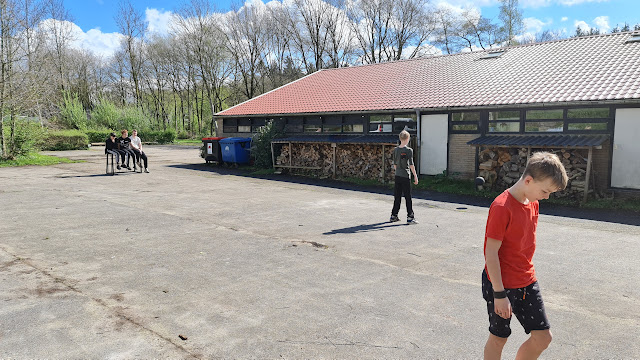week 14 A wet start to Spring
Week 14
Boot te plek (boat in place)
Windows in
Kids'weekend
Windows in
The floor heating and under floor electrics come this week - then the floor itself next week.
Kids' weekend
Finally, some time outside. Still too wet to mow - but the grass keeps growing!!
I took a few with me for my Sunday walk... they were trying to make didgeridoo sounds...
We'll try to take this photo every two weeks...
Aussie burgers - with the lot!
I usually keep an eye on the water levels because of the boating -but also because the chap doing the research and writing does it so well
Does El Niño also influence the river discharges of the Rhine and Meuse?It has often been in the news lately that there is currently an El Niño in the Pacific Ocean. The sea water off the coast of South America is then noticeably warm and its influence extends to a much larger area than just the coastal area of South America. A study by the KNMI (Weather Bureau) shows that spring in particular, after a winter with an El Niño, is wetter than average in our area. Over the north of the Atlantic Ocean, low pressure areas arise more often than average in such a year and these set in motion a south (westerly) air flow there, which brings precipitation areas to our surroundings.
It is obvious that the Rhine and Meuse river basins will also receive more rain in such a situation. Using the data from El Niño and its counterpart El Niña, I looked for such a possible connection in the discharge data of the Rhine and the Meuse in the spring. The data about El Niño can be found on the website of the American weather service ( NOAA ) and registration starts in 1950.
In a year with an El Niño, the sea area off the coast of South America becomes about 1 to sometimes 2 degrees warmer than average and in an El Niña year the sea is a few degrees colder than average. For my analysis I based my analysis on all years in which the sea temperature there was more than 1 degree warmer than average or 1 degree colder. Since 1950, this has resulted in 16 winters with an El Niño and 17 with an El Niña.
If you can be bothered, he then goes on to examine the differences in El Nino years and El Nina years.
However, the Rhine will certainly no longer have a Spring with a low average discharge, because with the thick snow cover that is still present in the Alps, we can assume that a considerable amount of melt water will still flow later in the spring. come. But for a high ranking in the list of El Niño years, a lot of precipitation must also fall in May and June and we will have to wait and see whether that will happen.





















Comments
Post a Comment